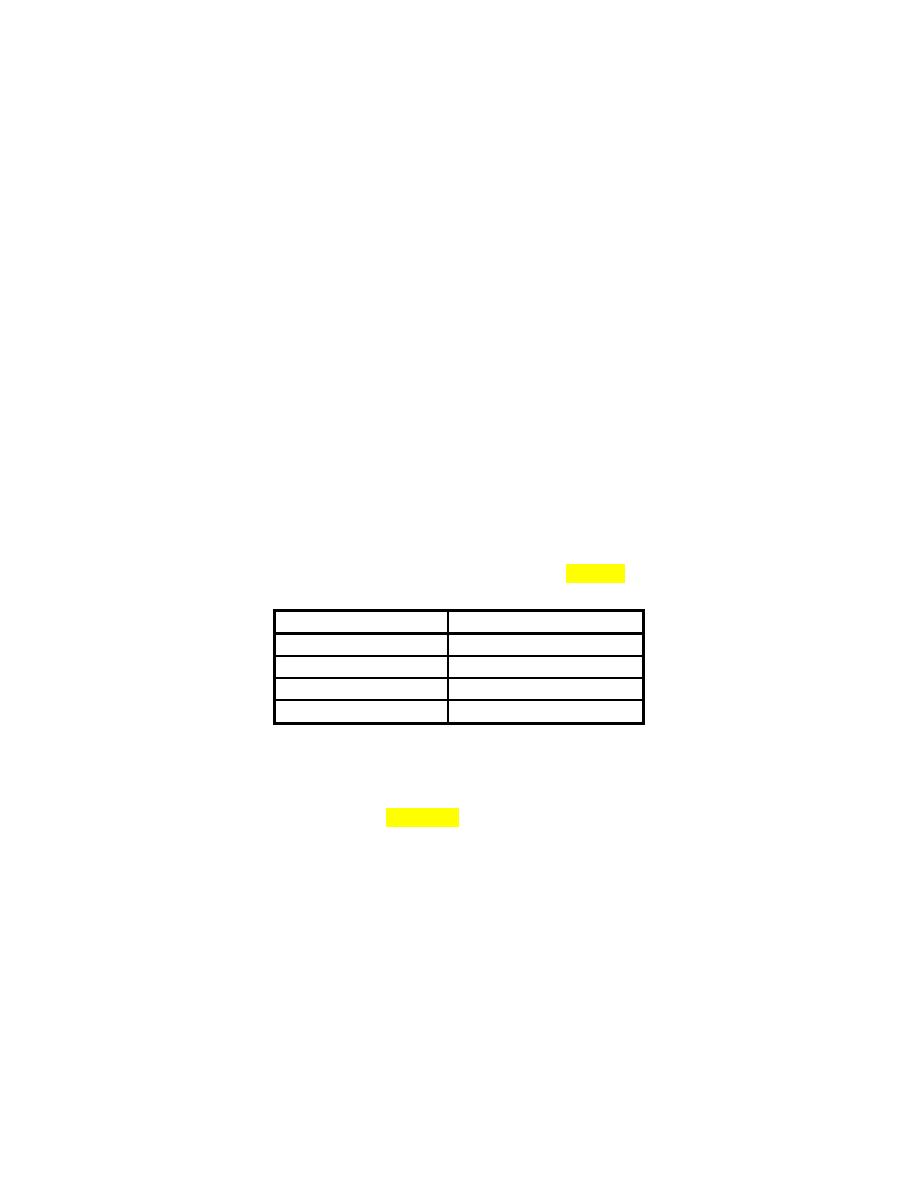
CEMP-E
TI 850-02
AFMAN 32-1125(I)
1 MARCH 2000
(2) Standard and compromise joint bars will be properly factory designed and constructed and will be
of the size, shape, and punching pattern to fit the rail being joined. New joint bars will meet
"Specifications for High Carbon Steel Joint Bars" or "Specifications for Quenched Carbon Steel Joint Bars
and Forged Compromise Joint Bars" in chapter 4, part 2 of the AREMA Manual and joint bar assemblies
in chapter 4, part 1 of the AREMA manual. Compromise joints will be specified as indicated in AREMA
Plan 700B.
(3) Secondhand joint bars may be used on secondhand rail if not bent, cracked, excessively
corroded, or otherwise defective. Secondhand joint bars will not be used on new rail.
(4) Insulated joints required to isolate signal currents for road crossing warning devices may be either
the field-applied type or prefabricated (glued) type. Special insulated tie plates are also required.
(5) It is recommended that rail joints be welded where located in road crossings, paved areas, or at
any location where access to the joint is restricted.
e. Track Bolts, Nuts, and Spring Washers.
(1) Track bolts, nuts, and spring washers will conform to the specifications in chapter 4, parts 1 and 2,
of the AREMA Manual.
(2) Common bolt diameters for different rail weights are found in table 6-11.
Table 6-11. Common Joint Bolt Diameters
Bolt Diameter (in.)
Rail Weights (lb / yd)
3/4
60 to 75
7/8
70 to 90
1
90 to 130
1-1/8
131 to 140
f. Rail Anchors.
(1) Rail anchors restrain longitudinal rail movement and should be used on main running tracks in the
quantity and arrangement diagrammed in figure 6-22, as a minimum. Additional anchors may be required
on track with grades steeper than 0.5 percent, and where combinations of traffic volume, speed, and
curvature indicate a need.
6-37



 Previous Page
Previous Page
